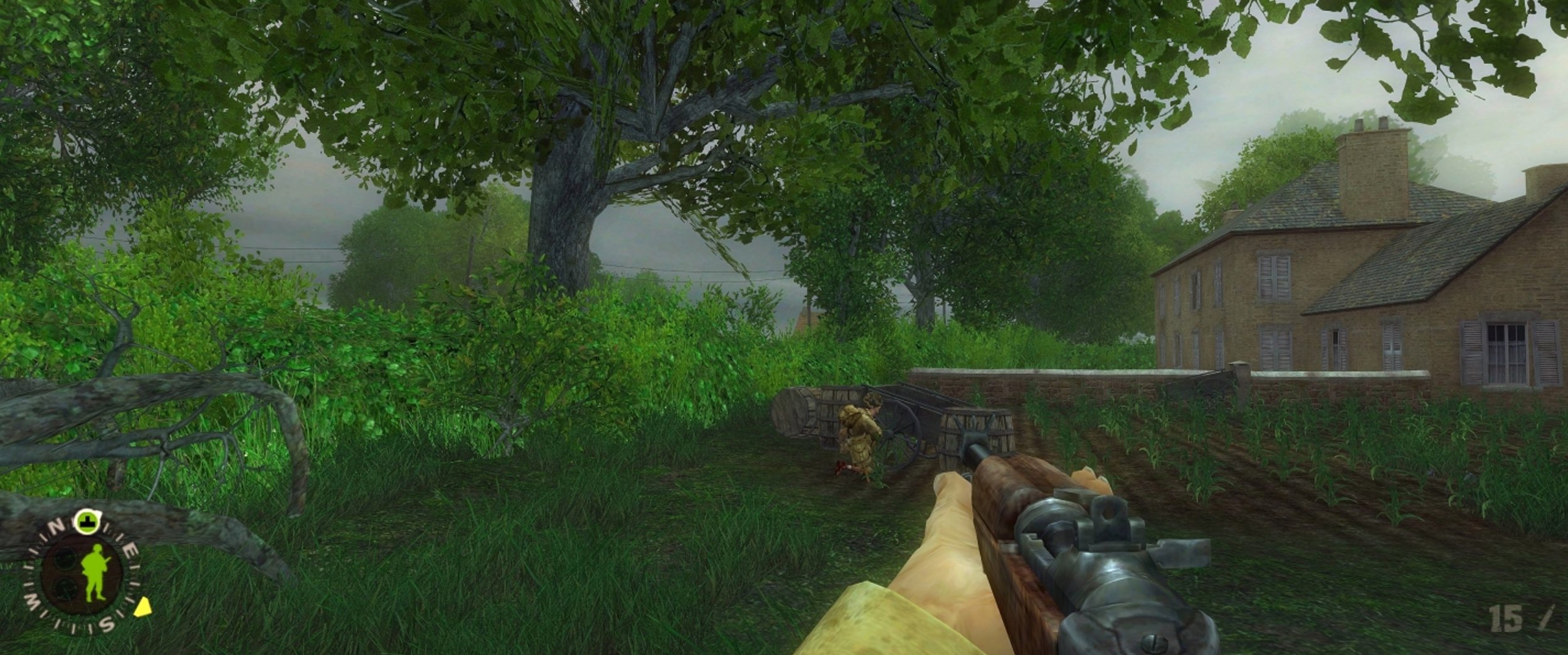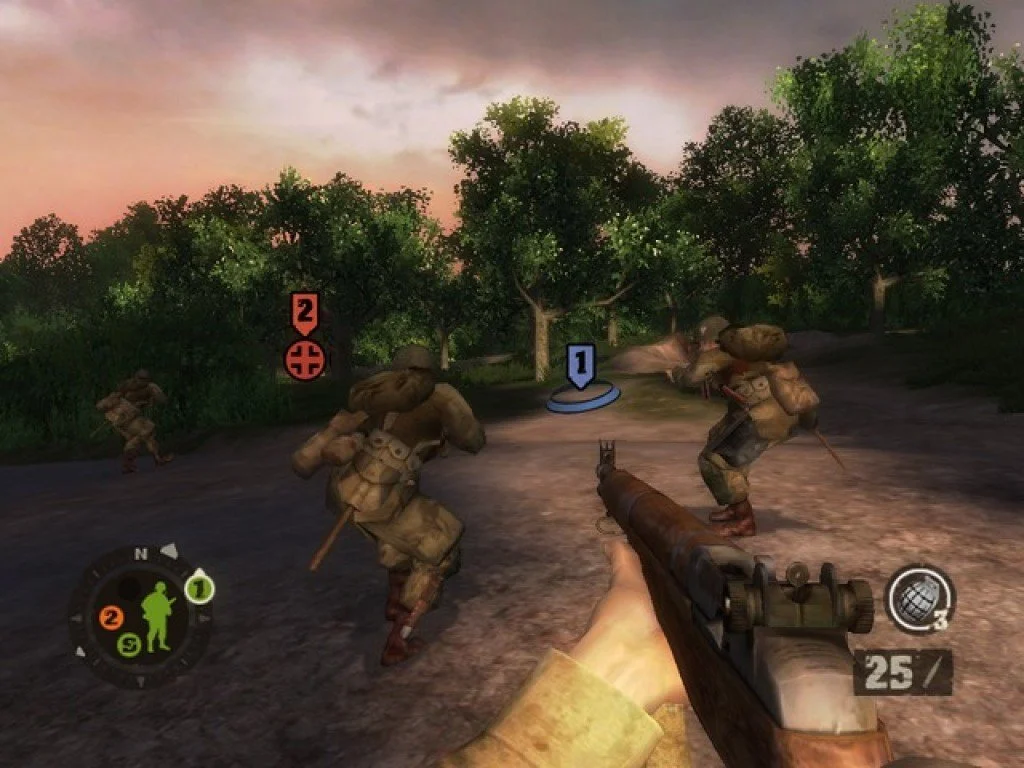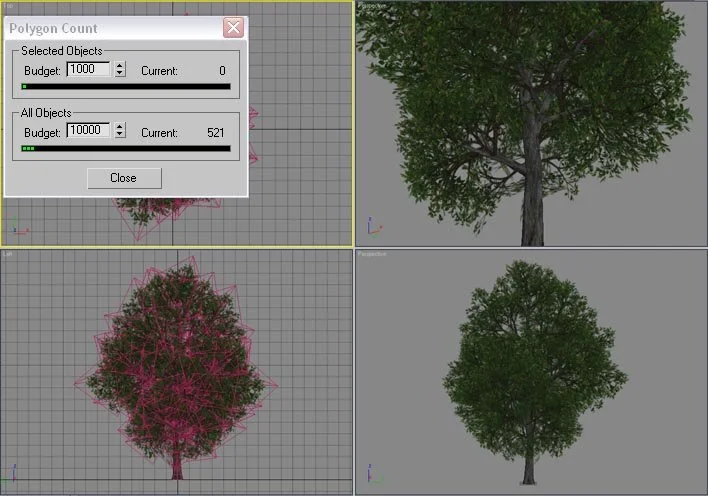Brothers In ARMS
ROAD TO HILL 30
Gearbox Software - 2003 to 2005
Genre - Single Player, Tactical Squad, FPS
Role - Asst. Lead Artist
Responsibilities - Technical Art, Game Design

“A GRITTY WORK OF HISTORICAL FICTION”
ROAD TO HILL 30 was an innovative look into the difficult life of an airborne squad leader during the invasion of normandy.
GAME DESIGN
While my primary role on Road to Hill 30 was art, I was able to contribute a solution to the games biggest challenge in early development. The one touch context command system.
Early versions of RTH30 featured a football-play style interface where players would choose one of three options at the beginning of an encounter. Further iterations centered around commanding individual soldiers one at a time, which proved to be tedious.
I imagined a system where players could aim at a location, and click a single input to intelligently take an action based on the context of the location. Clicking on a wall would cause your team to take cover, and selecting an enemy would cause your team to fire.
This initial concept was further expanded by adding the suppression system where distant squads could be pinned down by issuing a “suppressing fire” command. A simple pie-icon communicated how suppressed an enemy unit was.
DEAD MANS CORNER
One of my favorite aspects of this project was learning the history of WWII and teaching that history to players. Below is a composite image I created of “Dead Mans Corner”. A real world location and scene we accurately recreated in game. I did much of the level design, and modeling for this level, as well as creating process for baking static lighting into the vertex colors of the larger structures to create a more realistic sky lighting effect.
TECHNICAL ART
I was responsible for prototyping and defining the tech and pipelines we would use to create levels in RTH30.
The challenge was to depict huge open world landscapes, dense foliage, high character count, and epic cinematic sequences at good framerates on the brand new (at the time) X-Box gaming console.
Being one of the first Unreal developers to ship a game of this complexity on a new console meant we were on the bleeding edge the entire way. I owe a huge thanks to the amazing Gearbox engineering team for their tireless effort.
CINEMATIC FEEL
Being that we were inspired by the epic WWII films and shows of the era. We wanted to recreate the feel of a cinematic experience digitally.
To that end I created a series of lens effect and camera relative particle systems. These were designed to emulate the camera verité style where the audience is plunged into water, and splattered with blood and dirt.
Particles took in vector parameters from the game systems to direct splatters opposite the blast source.
Postprocessing
Another modern feature of games at the time was the soft focus of lens blur. I feel that many games of the era overused this trick, but I worked closely with engineering to develop a subtle implementation that had the effect of blending the lighting in the scene across objects and creating a cohesive image.
Looking back I would have liked to use the blur effect more sparingly, even disabling it completely for scenes that demanded a more staccato pace.
Rendezvous with Destiny
I was a major contributor to the opening "Drop" sequence in Rth30.
I created, the skybox tech, visual effects, camera effects, materials, and lighting. I’m especially proud of the sequence where the player jumps from an exploding aircraft and drops to the ground in the play space in a nearly seamless transition.
Hill 30
Many hands played a part in the opening scene at Hill 30. I contributed scripting, rain effects, postprocessing, explosions, tracer fire, muzzle flashes, and the main “dugout” meshes that define the trench line. As well I created most of the foliage seen throughout the game.
A WORLD MADE OF TREES
Building a world almost entirely of trees, grass, and hedgerows was an extremely challenging task. Masked materials were significantly more expensive to render that opaque, and fill rates on the X-Box were quite low at the time.
We didn’t have any tools for generating trees so I developed a process in 3D Studio Max to build them. I used a fractal sequential cloning technique that made it pretty quick to make new variants. As well I identified a Maya workflow for quickly generating masked branch and leaf textures using a single brush stroke.
Next was to very carefully pack the textures into the tri-foil shape seen below. This change reduced overdraw dramatically compared to traditional quads. Another win was packing trunk and leaf elements into the same texture. While it cost more on the GPU to draw the trunk as masked, the technique cut the draw calls on the CPU in half for each render pass which was an overall win.
The last step was to use vertex colors to add multiple different scales of wind sway to the trunks and leaves.
I applied these same techniques to all our foliage which allowed for a lush look at a solid framerate. A memorable moment was when Microsoft engineers reviewed our build they remarked that we were coming close to achieving the max theoretical throughput for the hardware with our scenes. It felt great to be making the most of the machine.













